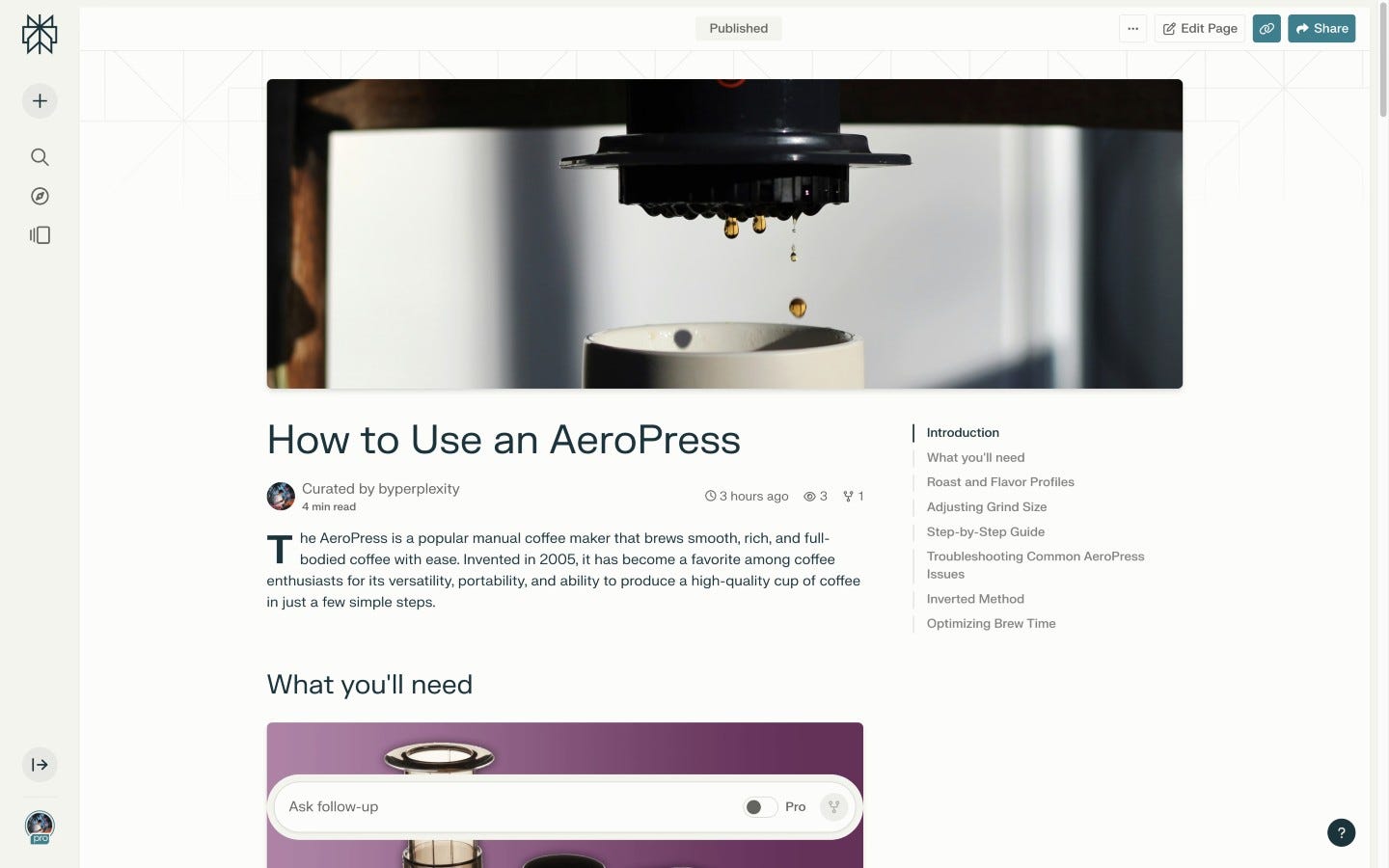Will this be Perplexity AI's moat?
Perplexity Pages changes large language model (LLM) chatbots from content providers to content creators. It can be Perplexity's moat against competitors.
Perplexity AI has just released a new feature called Pages. It is a tool that helps create rich content with the help of an LLM. Using large language models (LLM) for content creation is not new. Some content management systems have integrated LLMs into their tools in recent months.
But the experience in Perplexity Pages has been created from the ground up for users to cooperate with the AI in creating content, from the outline to the research, to writing the draft, editing the copy, and formatting the page. You can easily insert and move sections, generate images, and make changes by prompting the LLM. The tool is easy to use and you can quickly create a page with links to sources and publish it on Perplexity.
Perplexity has made Pages available to all users. It is worth noting, however, that you should still use the tool with caution. It can hallucinate, draw information from unreliable sources, and has some kinks that need to be ironed out. For example, it is hard to manually edit the content after the AI generates it, and you must do it through prompts. This can make it frustrating for complex topics that need a lot of editing and polishing.
However, this can point to a potential future for Perplexity and other companies that are building application layers on top of LLMs. Perplexity works with GPT-4, Claude, and its own models. There has been much debate on what will be the correct business model for what are often referred to as “GPT wrappers.” What can prevent OpenAI, Microsoft, Google, or some other LLM provider from replicating the same product?
Currently, the switching costs from Perplexity to a similar tool are very low because it has no differentiating factor. It uses models and data that are available to every other company. Microsoft/OpenAI and Google DeepMind can provide similar services at a lower cost.
Success for Perplexity will hinge on creating a moat and delivering experiences that cannot be replicated. Pages can become such a feature as it changes the LLM assistant from an information provider to a content creator. With enough critical mass, Perplexity can create a rich dataset that it can use to train its own models or to provide better answers to user queries. And it can direct user traffic to its own pages, which might provide opportunities for monetization in the future.
As LLMs are being commoditized, many analysts are pointing out that having access to better data will be the differentiating factor between companies that are creating LLMs or building applications on top of LLMs.
It will remain to be seen how reliable and successful Pages will be. For now, it is very convenient and easy to use. Perplexity will need to figure out how to make sure users don’t exploit this feature to flood its platform with poorly curated pages. Otherwise, it will degrade Perplexity’s main product.
But the general idea of an LLM being both the curator and the creator of content seems to be an intriguing direction for the future.
Perplexity is not the only company that is trying to build new experiences and moats around its product. OpenAI tried it with GPT Store with mixed results. The idea is to have extra tools that are not available on other platforms and will lock users in on ChatGPT. Microsoft is using its vast distribution channels and integration capabilities to create an AI moat around its Copilot brand. Each has different approaches but aims to achieve the same goal: getting users hooked to the company’s AI product.
With both private and open LLMs evolving at a very fast pace, it is hard to tell who the winners and losers will be.


